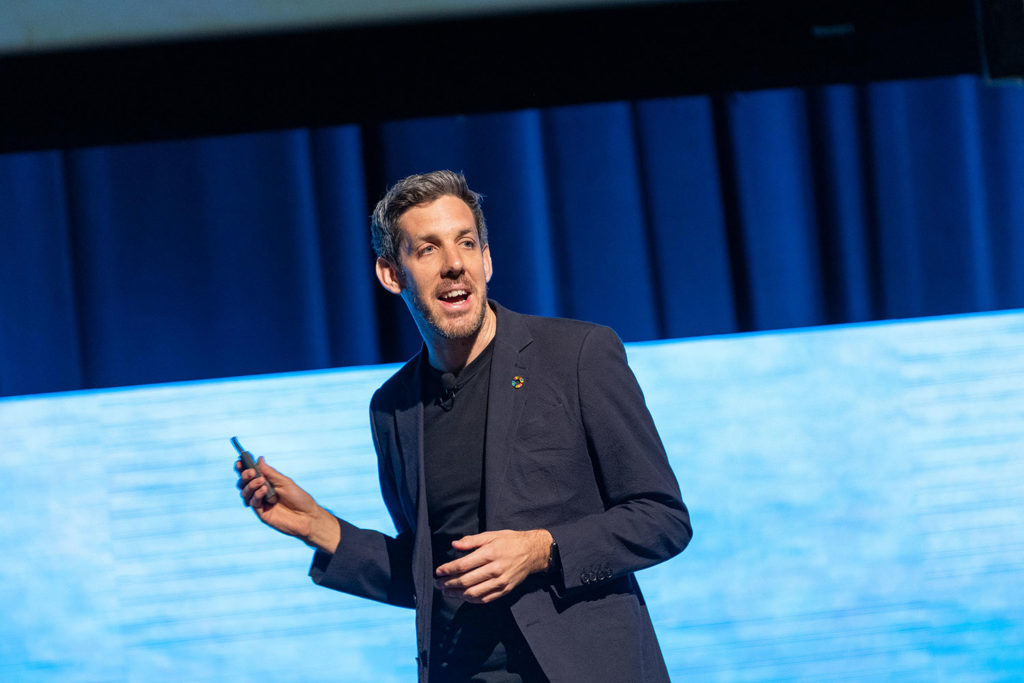From Australia’s bushfire crisis to the COVID-19 pandemic, the engineering profession has worked through a number of challenges since Melbourne hosted the World Engineers Convention (WEC) last November. Now, selected experts are back to discuss how the engineering landscape has altered, and what the future might have in store.
Aptly themed ‘A changing landscape in 2020’, the World Engineers Symposium, held from 18 to 20 November, will see WEC 2019 speakers return to share their knowledge and new experiences gained over the past 12 months.
Here are three reasons not to miss it.
1. Keynotes for a new age
There will be six plenary sessions across the event, with experts discussing everything from climate smart engineering to the future of the office. It’s a forward-thinking line-up packed with great engineering minds from Australia and overseas, who will explore several big ideas.
This includes Professor Carlo Ratti, Director of the Senseable City Lab at MIT and Founding Partner of Carlo Ratti Associati, who spoke about the need to create more liveable, sustainable cities at WEC.
He’ll be back to discuss the evolution of the traditional workspace, offering a glimpse into new ways of working in the office of the future. Make sure you check out Ratti’s plenary session on 18 November to learn how Carlo Ratti Associati transformed the Agnelli Foundation’s 20th-century building in Turin, Italy into an innovative office modelled after the Internet of Things.
Also making a return appearance is Matt Gough, Director of Innovation at MACE, the construction company behind structures such as The Shard and the London Eye. After delivering a keynote address at WEC about why the construction industry should be more sustainable, Gough is back to explore the future of the built environment in a post-pandemic era.
While the rapid changes brought about by COVID-19 shone a light on the fragility of the construction sector, Gough will argue that it also presented a glimpse of a better future. See him in action on 19 November to find out why.

Another session not to be missed is Professor Veena Sahajwalla’s talk (20 November) on aligning recycling and manufacturing with new technologies.
Prof Sahajwalla FIEAust, who is the Director of Sustainable Materials at the University of New South Wales (UNSW), says we need to see waste as a valuable resource for much of the materials we use in society.
She’ll show how UNSW’s SMaRT Centre has developed technology that can transform waste such as glass and textiles into ‘green ceramics’ for the built environment. The centre is also working on turning plastics from e-waste and other waste sources into filament as a resource for manufacturers and other users for 3D printing.
2. Encouraging debate
The symposium also promises some informative panel discussions that are sure to spark conversations. This includes ‘Build Back Better’ on 18 November, where CEO of the Green Building Council of Australia, Davina Rooney, will join CEO of Solar Victoria and co-Chair of Victoria’s Building Recovery Taskforce Stan Krpan, and Peter Colacino, Chief of Policy and Research at Infrastructure Australia, to talk about the role of engineers in Australia’s economic recovery following bushfires, floods and the pandemic.
Then there’s another topical discussion on 19 November, with three panelists examining how COVID-19 has disrupted the future of engineering — from individual education pathways and careers to organisational working patterns and national economies.
Speakers including Tesla Industrial Engineer Meredith Westafer, Minderoo Foundation Data Ecosystem Lead John Sukkar, Swinburne University Director of Industry Partnerships Felicity Furey MIEAust and moderator Fifth Frame Partner Jon Williams will explore what COVID-19 has meant for them personally, as well as how engineers more broadly can continue to work together to contribute most effectively.
3. Attend from anywhere
As with most events this year, the World Engineers Symposium has gone virtual. This means you can attend from anywhere that suits you, whether that’s the office, your dining table, or even the couch.
The event will consist of six two-hour sessions spread across three days, with each session including a plenary presentation and two technical speakers — one from the World Federation of Engineering Organizations, and one of the highest scoring abstract authors from WEC 2019.
And because it’s all online, you can join for a session, a day or as many of the 12 hours of content as you like. Check out the program to get started.
For more information and to register, click here.